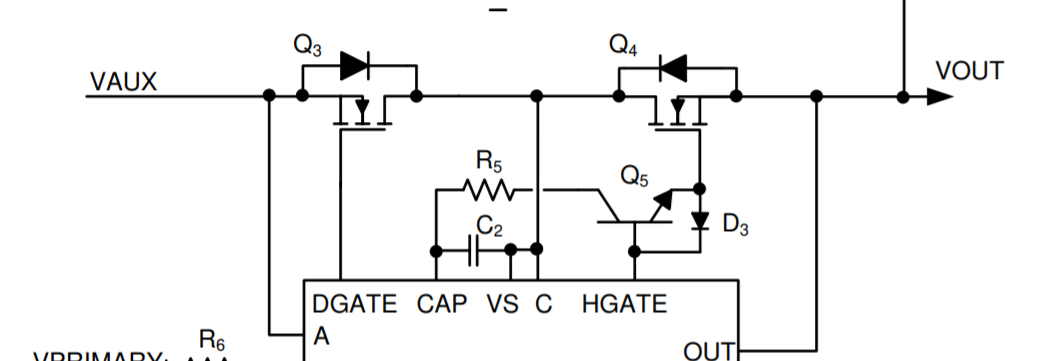Other Parts Discussed in Thread: LM74800-Q1
Hi,
I was looking for a priority power Mux for my two 12V/6A inputs. Mine is a 71W (at PD side) PoE application with optional 12VDC adapter in. A 12V Adapter input joins the 57V to 12V DC-DC converter o/p and this is where I am looking for a solution.
LM74800 looks promising. An app note, Six System Architectures With Robust Reverse Battery Protection Using an Ideal Diode Controller covers this part for many applications, of which I'm interested in Power muxing. However, the design support is minimal and doesn't explain the circuit functioning. For eg: how Vsns functions while priority power muxing.
Unfortunately, the datasheet too doesn't shed much light on Power muxing application, even though it covers design procedure for few other applications. Could you please share more information/ app note, if any, which helps to design a priority power mux using LM74800?
Attaching the recommended circuit for a priority power mux from the above mentioned app note:
Few questions based on it:
-How does VSNS on AUX LM74800 help not to turn VAUX? How is VSNS/SW/OV pins related to the turning off of LM74800 when VPRIMARY is connected?
-Say if I have a cheaper reverse voltage protection implemented at the input of VPrimary, What is the use of LM74800 on VPRIMARY path?Since the VPRIMARY has the priority, whenever Vprimary is connected, the upper LM74800 has to turn on rt? It is as simple as a shorted wire. What else is the function of LM74800 on the Vprimary path other than reverse protection?
-Why do we need the Mosfet driver (Q5) only at Aux LM74800 side?
-Do you have more design information on PMUXing using LM74800 like detailed design procedure for this application too?
Thanks & regards,
Abin



